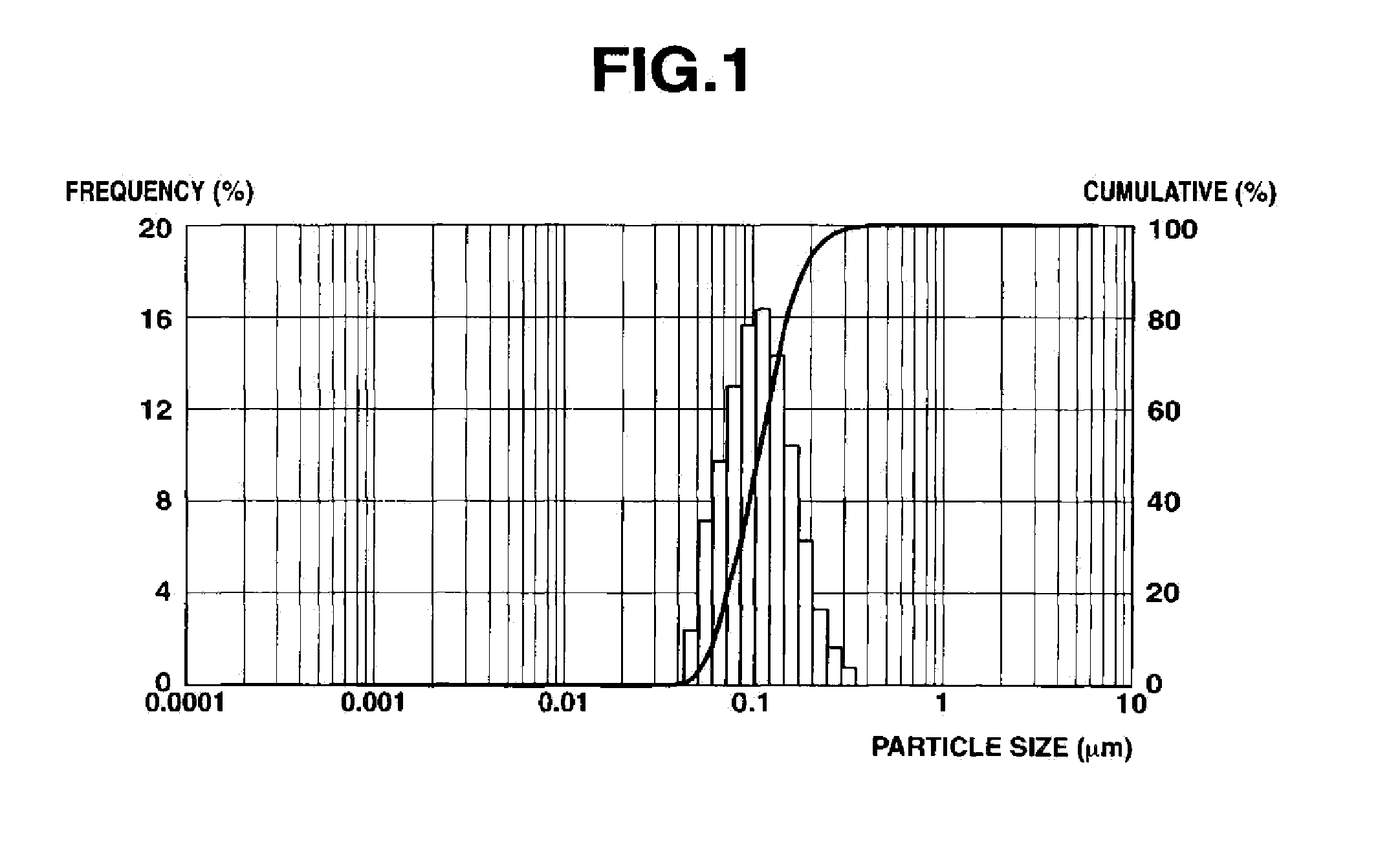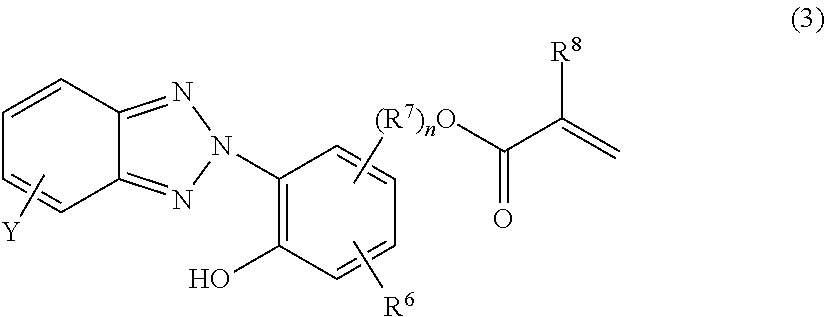Organic resin laminate
a technology of organic resin and laminate, applied in the direction of synthetic resin layered products, coatings, transportation and packaging, etc., can solve the problems of poor mar resistance, low hardness of coating systems, and several problems to be solved before coating films can withstand sunlight and weather for a long time, and achieve the effect of sufficient weather resistance and durability
- Summary
- Abstract
- Description
- Claims
- Application Information
AI Technical Summary
Benefits of technology
Problems solved by technology
Method used
Image
Examples
synthesis example 1
[0205]A 2-L flask was charged with 287 g (2.11 Si-mol) of methyltrimethoxysilane and cooled to a fluid temperature of about 10° C. Then 211 g of Snowtex O (Nissan Chemical Industries, Ltd., water-dispersed silica sol, average particle size 15-20 nm, SiO2 content 20%) and 93 g of 0.25N acetic acid aqueous solution were added dropwise while the flask was cooled so that the internal temperature might not exceed 40° C., allowing hydrolysis to run. Following the dropwise addition, the solution was stirred below 40° C. for one hour and then at 60° C. for 3 hours to bring hydrolysis to completion.
[0206]Thereafter, 300 g of cyclohexanone was poured to the reaction mixture, which was heated under atmospheric pressure until the liquid temperature reached 92° C., for distilling off the methanol resulting from hydrolysis and allowing condensation to run. To the reaction mixture were added 400 g of isopropanol as a diluent, 1.6 g of acetic acid, and 1.6 g of 25% tetramethylammonium hydroxide (TM...
synthesis examples 2 to 9
[0208]Eight silicone coating compositions (II-b) to (II-i) were prepared as in Synthesis Example 1 except that the type and amount of surface-coated composite oxide nanoparticle dispersion and the amount of leveling agent were changed as shown in Table 2.
[Synthesis of Compound Having Nitrogen and Alkoxysilyl in Molecule]
synthesis example 10
[0209]A 2-L flask equipped with a stirrer, condenser and thermometer was charged with 222 g of N-2-(aminoethyl)-3-aminopropyltrimethoxysilane and 242 g of hexamethyldisilazane as a silylating agent, which were heated at 120° C. under a nitrogen stream. To the contents, 496 g of γ-glycidoxypropylmethyldiethoxysilane was added dropwise for reaction, followed by stirring and heating at 120° C. for 5 hours. The low-boiling fraction was distilled off under vacuum at 100° C., yielding 862 g of a viscous compound having a viscosity of 1,387 cS, a refractive index of 1.4618, and a specific gravity of 1.048.
[0210]Then, a 2-L flask equipped with a stirrer, condenser and thermometer was charged with 862 g of this reaction product and 862 g of toluene. Under a nitrogen stream, 141 g of acetic anhydride was added dropwise to the contents at room temperature, followed by stirring and heating at 110° C. for 2 hours. Then 141 g of methanol was added dropwise to the mixture at 50° C., followed by st...
PUM
| Property | Measurement | Unit |
|---|---|---|
| refractive index | aaaaa | aaaaa |
| refractive index | aaaaa | aaaaa |
| refractive index | aaaaa | aaaaa |
Abstract
Description
Claims
Application Information
 Login to View More
Login to View More - R&D
- Intellectual Property
- Life Sciences
- Materials
- Tech Scout
- Unparalleled Data Quality
- Higher Quality Content
- 60% Fewer Hallucinations
Browse by: Latest US Patents, China's latest patents, Technical Efficacy Thesaurus, Application Domain, Technology Topic, Popular Technical Reports.
© 2025 PatSnap. All rights reserved.Legal|Privacy policy|Modern Slavery Act Transparency Statement|Sitemap|About US| Contact US: help@patsnap.com



